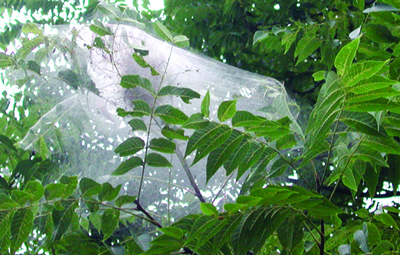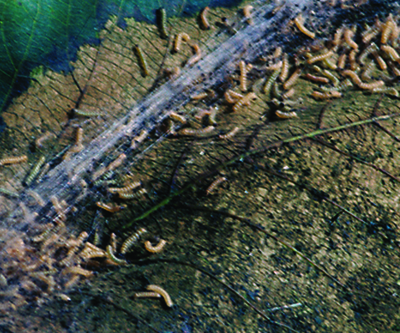Fall webworm
July 30, 2015
 Hyphantria cunea
Hyphantria cunea
Fall webworms feed on at least 88 different species of plants in the U.S. Favorite host plants include black walnut, wild cherry, hickory, crabapple and birch.
Larvae pass through as many as 11 instars on their way to developing into adults. They create silken tents on the ends of the branches. Look for developing larvae as goldenrods begin to bloom.
Management
Because they occur so late in the growing season, there is usually no need to control webworm. Unsightly webs can be pruned out or dislodged with a strong stream of water. Unlike eastern tent caterpillars, these caterpillars stay in the web while feeding, so pruning the webs at any time of day will eliminate them.

Young larvae developing on a walnut leaf. Webworms have many natural enemies including birds, predaceous bugs and parasitic wasps. Leaving the webs intact allows populations of their natural enemies to develop
Print a PDF of this page: Fall webworm



 Print
Print Email
Email



